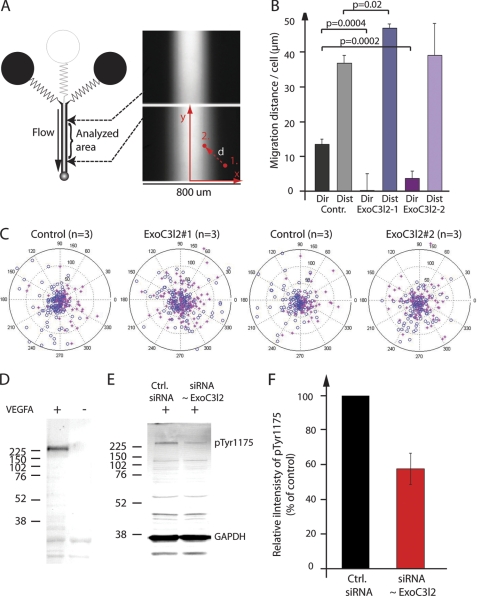FIGURE 7.
Exoc3l2 is required for directional endothelial cell migration in response to a gradient of VEGFA. A, graphic overview of the microfluidic system used to generate VEGFA gradients (right panels). Cells that are attracted by the growth factor will migrate toward the center of the channel. A cell that moves from position 1 to 2 will record a distance (length of the vector d) and a direction (angle of d). B, two siRNA were used to reduce exoc3l2 expression. Cells were exposed to a VEGFA gradient ranging from 0 to 20 ng/ml, and the average directionality (dir) and distance (dist) of the cells were measured for each experiment. Error bars represent S.D. by Student's t test (p < 0.05). C, polar plots of the distance and direction of each cell. Cells on the left side of the chamber are represented by red stars and cells on the right side by blue circles. A separation of the stars from the circles indicates that the cells receive directional information from the gradient. D, Western blot of pVEGFR2 (Tyr-1175) after VEGFA stimulation for 5 min. Total cell lysates from HMVECs were used for all experiments. E, VEGFA-induced VEGFR2 phosphorylation following siRNA transfection to suppress EXOC3L2 expression. F, quantification of the results in E. Error bars represent S.D. (n = 3).

